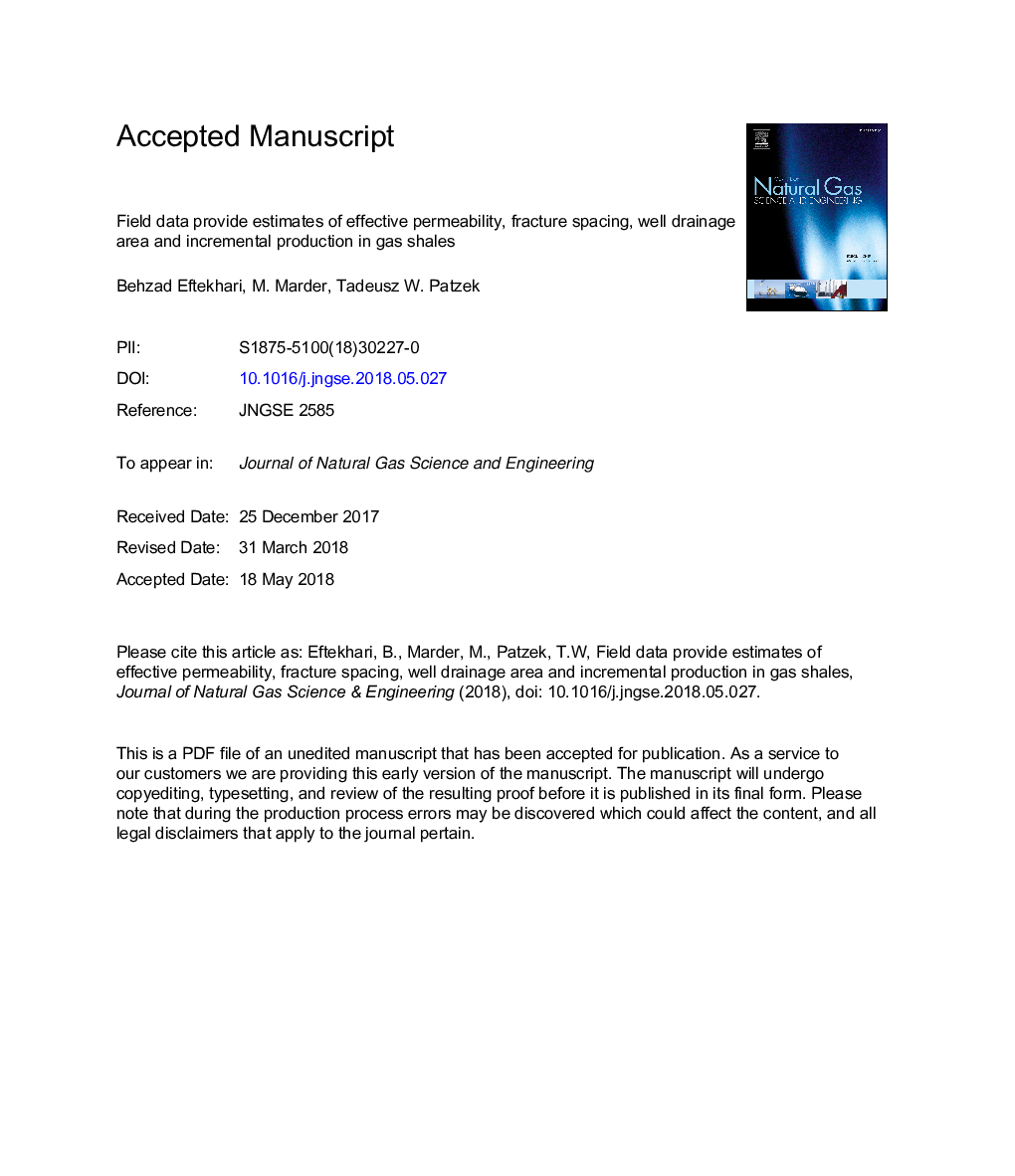| Article ID | Journal | Published Year | Pages | File Type |
|---|---|---|---|---|
| 8127862 | Journal of Natural Gas Science and Engineering | 2018 | 36 Pages |
Abstract
About half of US natural gas comes from gas shales. It is valuable to study field production well by well. In early 2018, there were some 67,000 active horizontal gas shale wells in the US, some more than 12 years on production. Our approach is a hybrid between an unstructured big-data approach and physics-based models. We extend a previous two-parameter scaling theory of shale gas production by adding a third parameter that incorporates gas inflow from the external unstimulated reservoir. This allows us to estimate for the first time the effective permeability of the unstimulated shale and the spacing of fractures in the stimulated region. From an analysis of wells in the Barnett shale, we find that on average stimulation fractures are spaced every 20â¯m, and the effective permeability of the unstimulated region is 100 nanodarcy. We estimate that over 30 years on production the Barnett wells will produce on average about 20% more gas because of inflow from the outside of the stimulated volume. There is a clear tradeoff between production rate and ultimate recovery in shale gas development. In particular, our work has strong implications for well spacing in infill drilling programs.
Related Topics
Physical Sciences and Engineering
Earth and Planetary Sciences
Earth and Planetary Sciences (General)
Authors
Behzad Eftekhari, M. Marder, Tadeusz W. Patzek,
